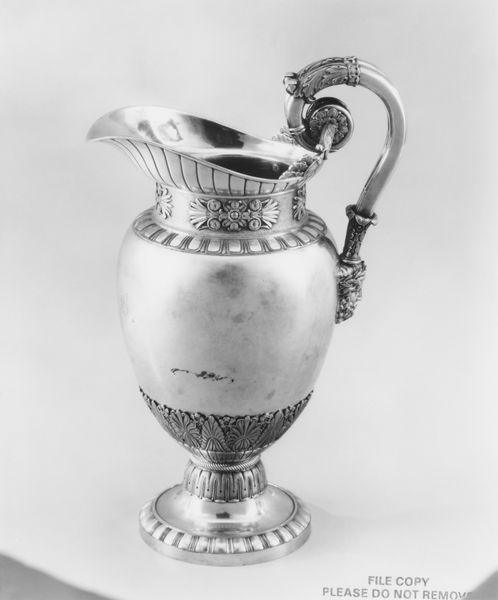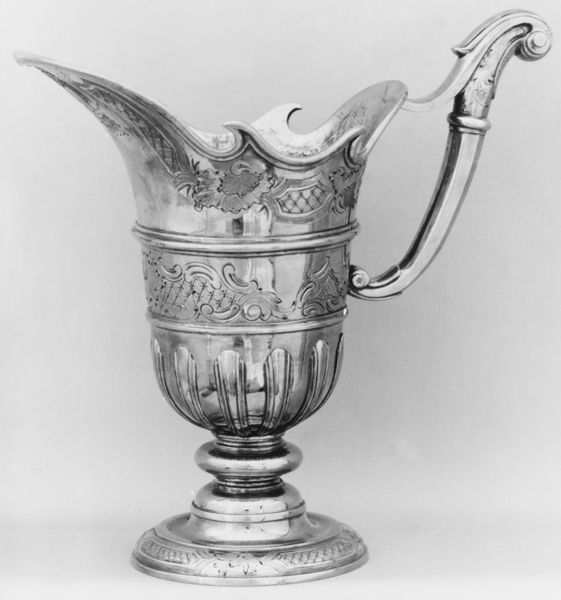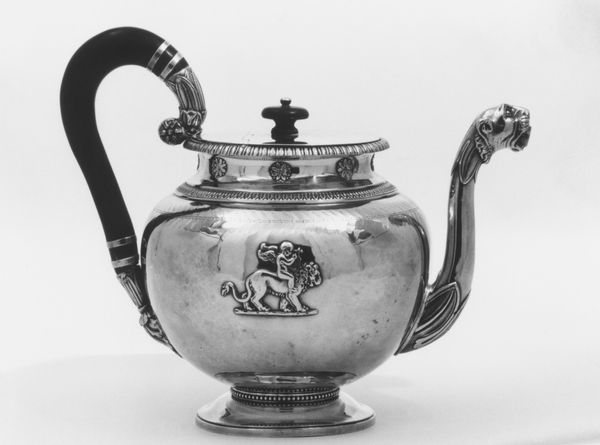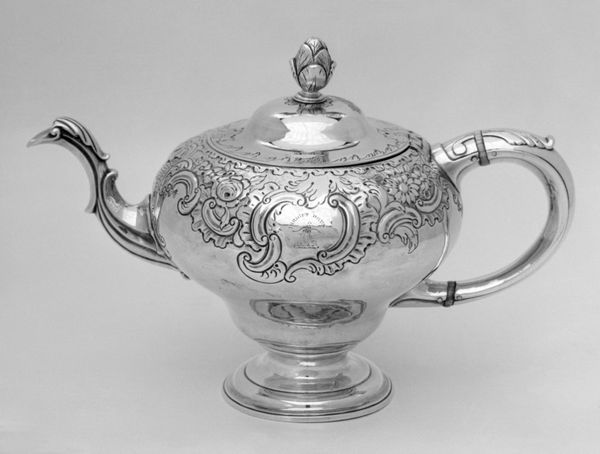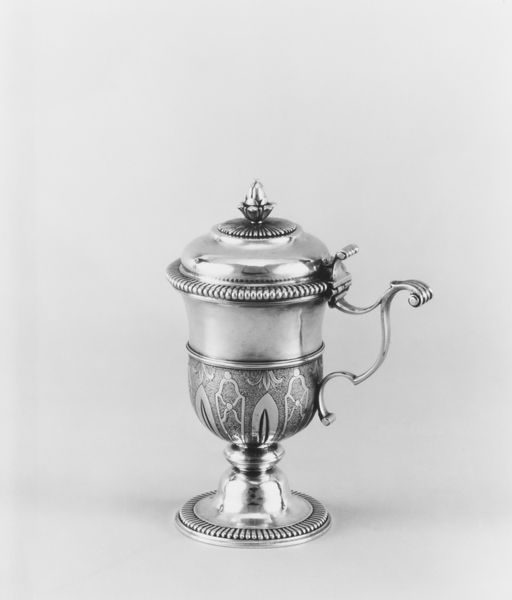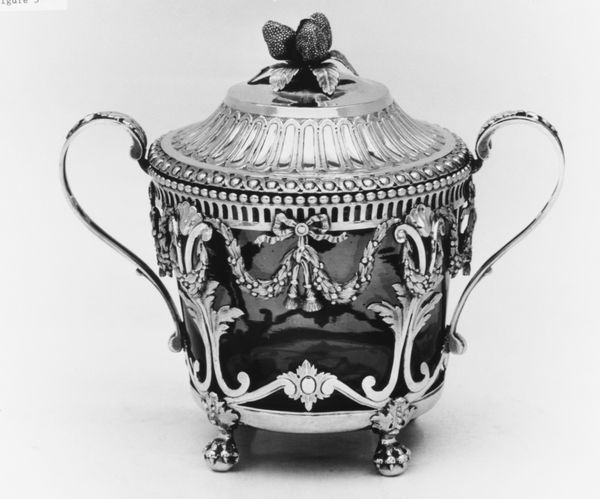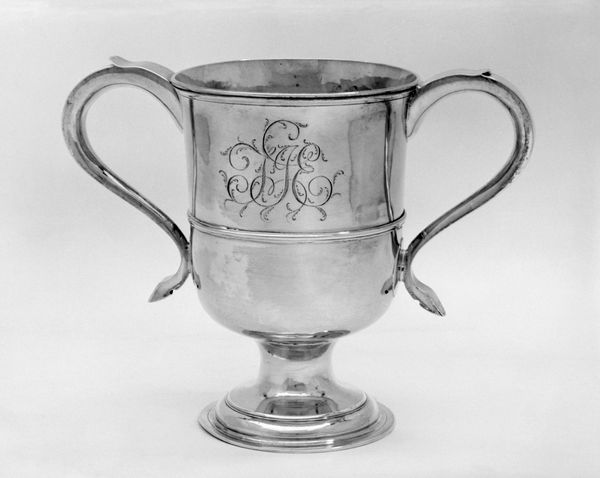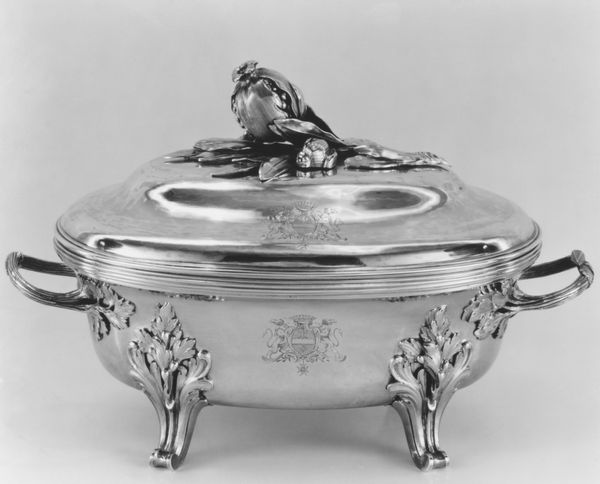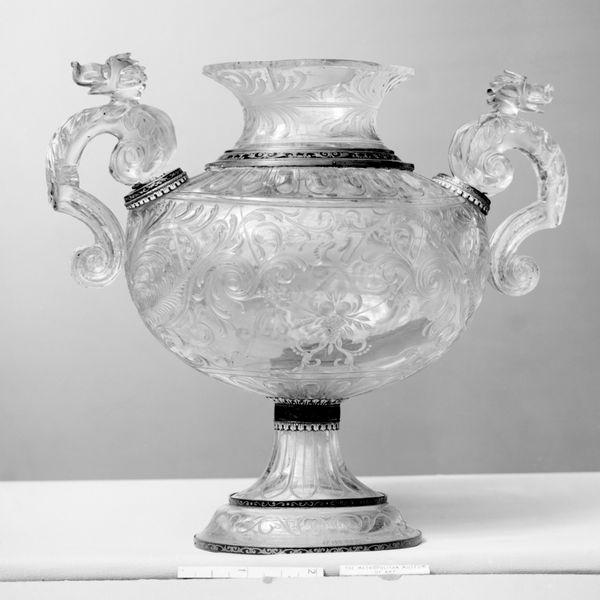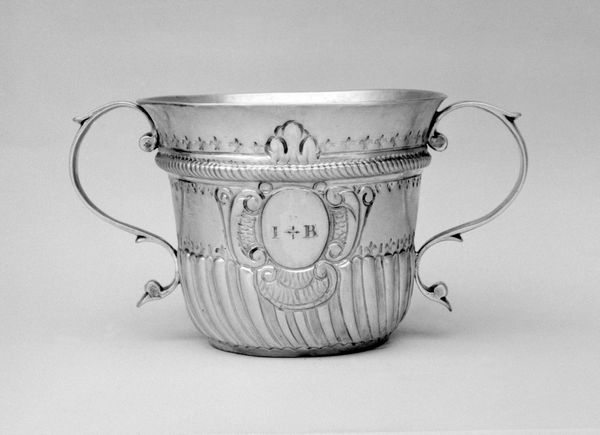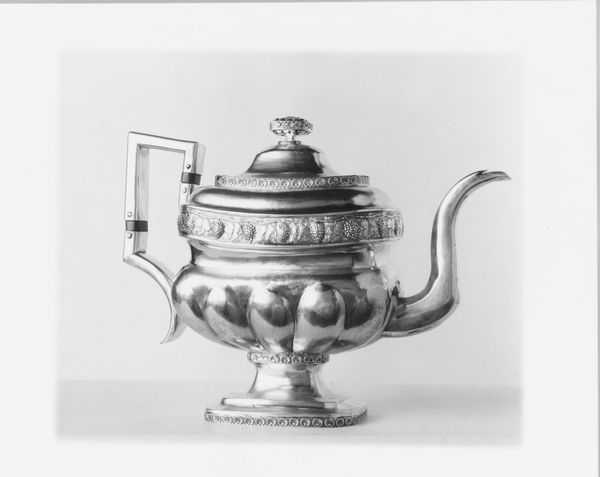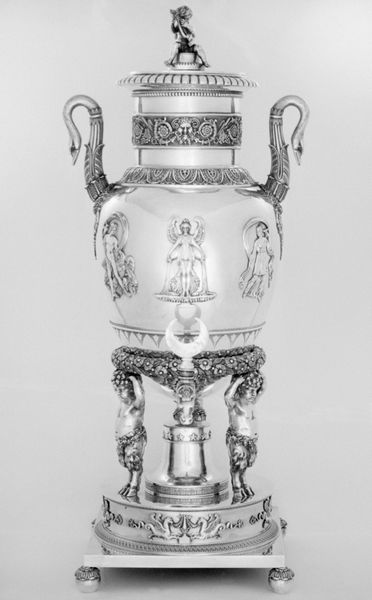
silver, metal, sculpture
#
neoclacissism
#
silver
#
metal
#
sculpture
#
decorative-art
Dimensions: Overall: 9 1/4 × 13 1/4 × 8 in. (23.5 × 33.7 × 20.3 cm)
Copyright: Public Domain
Curator: Welcome. We are looking at a silver teapot, part of a larger service, crafted between 1809 and 1819 by Marc Jacquart. You can find it in the Metropolitan Museum of Art. Editor: The first thing that strikes me is the almost unsettling combination of smooth, reflective surfaces with that elaborate ornamentation. It creates a kind of controlled chaos. Curator: That combination is characteristic of Neoclassical design. Beyond surface-level aesthetics, Neoclassicism looked back to the art and culture of ancient Greece and Rome, often reflecting the sociopolitical upheavals of the late 18th and early 19th centuries. Editor: I can see that. The clear, idealized figures lounging on the pot's side certainly evoke classical forms. The frieze circling the top—the masks, rosettes, grapevines—it's all so deliberate. It gives the teapot a certain weightiness, a seriousness. Curator: Absolutely, and that seriousness also needs to be read through a lens that acknowledges how such items signaled status and access to resources and networks that were inherently tied to power dynamics. Even something as simple as the motifs themselves, derived from antiquity, signified an alignment with a certain class and its ideology. Editor: The material also adds to that statement of wealth, right? The polished silver gleaming in the light; it must have been quite the showpiece. But is it functional? I mean, those ornate details on the handle and spout seem somewhat impractical for daily use. Curator: It's likely the teapot’s functionality played a secondary role to its value as a symbol of refinement. And to push on that point, the swan motif—used on the lid and in the reliefs—holds its own cultural symbolism related to love, beauty, and privilege, specifically from the elite class who were the prime consumer of such items. Editor: So much contained within a simple teapot. The Neoclassical aesthetic certainly offers visual pleasure with that intricate embellishment, and even evokes mythological fantasies but it simultaneously reveals so much more. It acts as a vessel, in every sense of the word, loaded with cultural meaning. Curator: Precisely, looking closely shows it to be so deeply enmeshed in networks of power and privilege. Foodways and rituals were and are an integral part of solidifying status, and objects like this, even if mass produced, act as material evidence. Editor: Considering all this, I see the teapot in a totally different light now. It’s much more than a pretty piece of metal; it’s a container overflowing with historical and cultural significance. Curator: It holds up a mirror, perhaps, to our own relationship with art, design, and their connection to broader narratives about ourselves and our place in society.
Comments
No comments
Be the first to comment and join the conversation on the ultimate creative platform.
